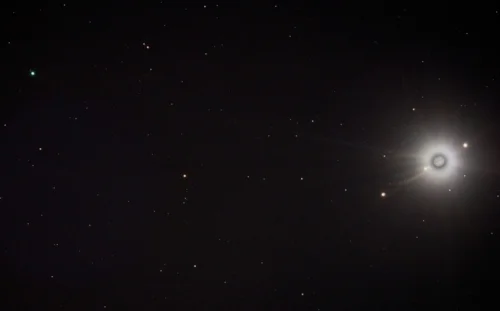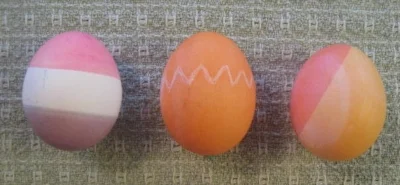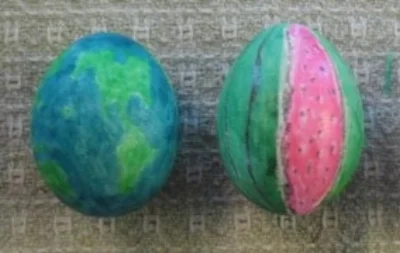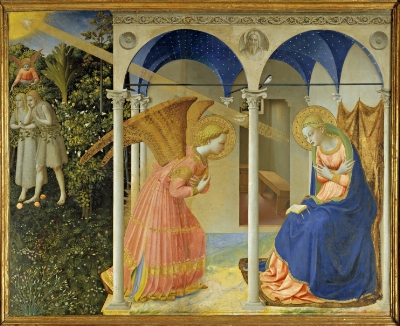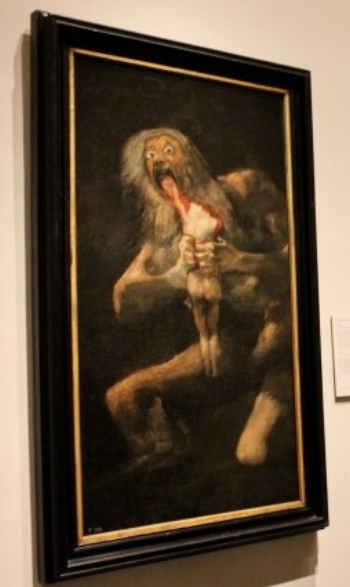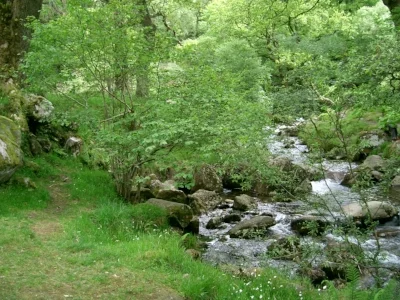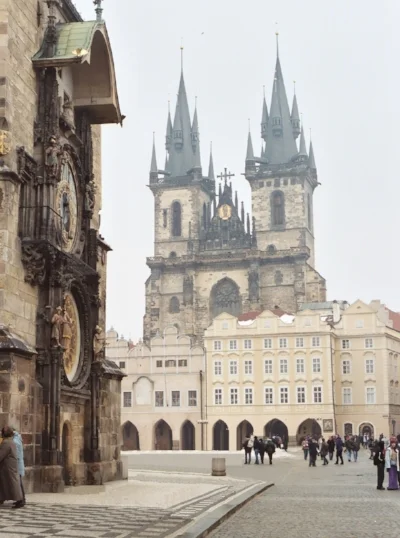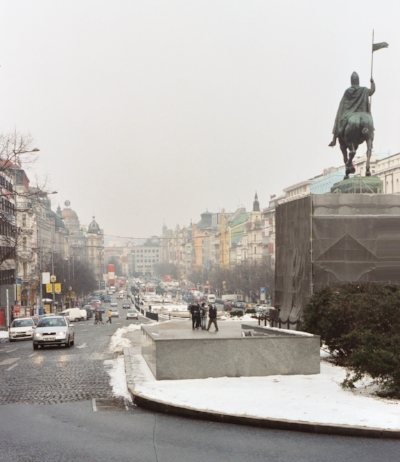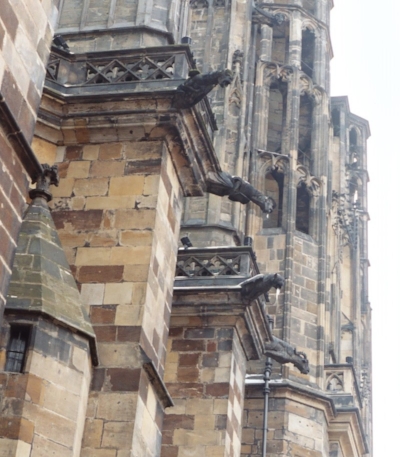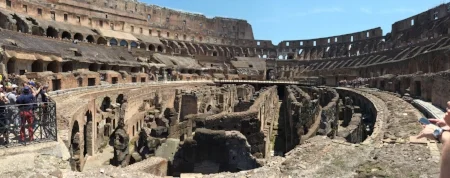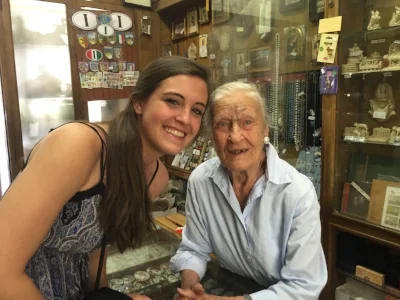USS Hancock casualties buried at sea, April 1945.
A coincidence of the calendar and the phases of the moon made 1 April 1945 and 2018 both April Fool’s Days and Easter Sundays. But fate made 1 April 1945 the start of the US invasion of the island of Okinawa, the deadliest battle of the Pacific. The battle for the island continued until 22 June 1945, resulting in more than 250,000 deaths: 12,000 American military, 100,000 Japanese military, and 140,000 Okinawan civilians. As many people died in that one battle as died in the atomic blasts at Hiroshima and Nagasaki combined.
USS Texas at sea, with two Quad 40 antiaircraft guns at the fantail—the very end—of the ship.
My father was there on the battleship, USS Texas, serving in the Marines and manning what they called “Quad 40s,” antiaircraft guns at the fantail of the ship. Having survived the battle of Iwo Jima just three months earlier, the captain of the Texas, Charles A. Baker, believed that the best way to stop the Kamikazes was to be ready: crew lived at their stations 24-hours-a-day for 50 days. Decades later, my father wrote,
“There will be no scurrying up ladders; the crew does not dislike the idea. Our guns stay manned and ready. K-rations and sandwiches are the bill-of-fare with the ever-present cup-a-joe….but the snap in the air sharpens the appetite, minimizing the difference. At night, I lie down to sleep on the predictably hard deck. My life jacket—we called them, “Mae West”—makes a pretty good pillow. The Pacific’s star-spangled sky proves a beautiful bonus.”
Kamikaze an instant before it strikes the USS Missouri. No U.S. servicemen were killed but the pilot was killed instantly; his remains were recovered on board. The Missouri’s Captain William M. Callaghan ordered that the pilot be given a military burial at sea, complete with a three-volley rifle salute and a bugler playing “Taps.”
Maybe the readiness of the Texas crew or maybe just luck, but death never visited the Texas that spring, even though Kamikaze attacks rained death on the Navy. Kamikazes sunk 36 ships and killed 4907 sea-going personnel, the heaviest single-battle death toll for the Navy. Describing April 12, my father wrote,
“The USS Tennessee is cruising abreast of us to port and is attacked by five planes. Four are splashed but the fifth crashes the ship. Tennessee’s stern is awash in flaming fuel; it is terrible to watch. We later learn that there are more than 100 casualties. The plane hit a 40mm mount manned by marines. Texas marines wonder about their sea-going friends.”
But even as the death toll climbed at Okinawa, as faceless lives were lost by the thousands, each life still mattered.
“About noon one of our carrier planes crashes 5000 yards off our port bow. Another plane circles to mark the spot until destroyer Williamson rescues the pilot. The circling plane and the rescuing destroyer, to save one man, is reassuring.”
Gun crews on the USS Texas track—and kill—a Kamikaze as it heads for her decks.
Days later, an enemy soldier was also spotted in the water. A whaleboat is sent out to pick him up.
“About noon we sight a man in the water 500 yards off starboard. We worry that suicide swimmers might attack the ships, so a few marines are ready with rifles. This swimmer is indeed Japanese, but not bent on suicide: he is a pilot, shot down the night before, in good condition but scared. He is the first live Japanese we see close up and the curious crew gawks.”
Kingfisher spotter plane is hoisted back onto deck on the USS Texas.
The struggle to save each life, even in the face of countless deaths, even in the midst of endless killing, is personal.
“On April 27 we witness a highly emotional event. The ship's Chaplain, Lieutenant Dickinson, tells us over the loudspeaker that one of Texas's spotter planes has been hit and the main pontoon has a gaping hole and cannot stay afloat long. The plane is returning to the ship. Each of our seaplanes carries a pilot and an observer—we are told the observer is badly wounded. Normally, the plane lands, taxies alongside, and is lifted aboard by a crane. We wait and watch. The plane touches down about 150 yards off the beam. A sizable hole in the main pontoon, clearly visible, fills with water; the plane stops dead and immediately begins to sink within perfect view of us on the fantail. The pilot, ensign J.R. Thompson, is up and out of his cockpit in an instant, climbing precariously toward the wounded observer, H. Jahnke. The pilot has now reached the wounded man. He straddles the fuselage and puts his arms under the observer’s arms. Every man watching pulls with him. The plane begins sinking fast. Now a whaleboat is underway but will not arrive in time. Jahnke's only hope is the pilot. Helplessly frustrated, we can only watch. The pontoon is quickly submerged and they are going down with the plane! Then Thompson, after seemingly endless minutes, somehow pulls the red-headed sailor free and tosses his deadweight into the self-inflating raft. The sailor seems lifeless as the ensign plunges into the sea; the plane disappears. A rousing cheer—like at a football game—goes up from the crew and lumpy throats abound. The ship's log, in abbreviated, icy rhetoric, will read: ‘At 1310 plane #5-0-7 made forced landing, pilot and observer picked up as plane commenced sinking.’ For me, it is one of the most unforgettable moments of the war.”
The lesson of Okinawa’s huge death toll was that the seemingly inevitable invasion of Japan would result in millions of deaths: accepting defeat was a foreign concept to Japanese culture. Harry S. Truman, the new president following Roosevelt’s death on April 12, made the decision to use atomic weapons to convince them to surrender. Thus, the half million war-deaths in the Pacific from April through August was considered a success compared with the millions who might have died.





